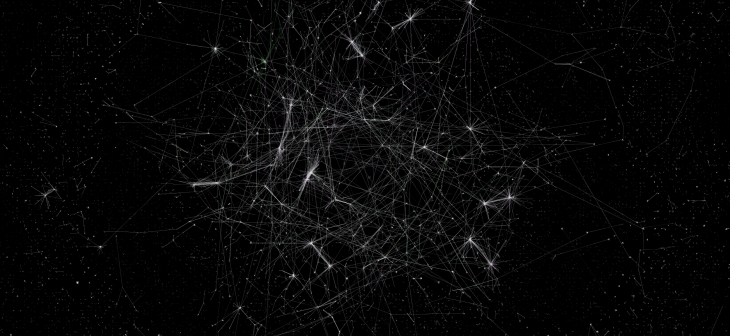Parametricism – A New Global Style for Architecture and Urban Design // Patrik Schumacher, London 2008
In a time where we witness a general obsession with advanced digital tools and techniques, form, as a concept, gains even more complexity and ambiguity than ever. From a parametric point of view, form results from a form-finding process, meaning, it is a bottom up design strategy where the architect is capable of defining the components of a system as well as the laws governing the corresponding relationships between them, but is incapable of predicting the resulting form. In Parametricism, process makes up the essence of design, while the outcome may always be subject to scrutiny. Todays’ tools offer architects and designers the luxury of setting the stage for highly complex designs arising from intricately defined correlations. In the chapters “On Growth and Form” and the “Genesis of Form”, form is essentially a product of a Mathematical formula or a Grid- To distort the form, deform the grid. Similar formal manipulations can be recognized in parametric urban design schemes where paranoia lies in clear geometric forms and their simple repetition or juxtaposition. It is worth noting that the starachitect Zaha Hadid, as a main promoter of the Parametric Era, had a graduate foundation in Mathematical studies before pursuing Architectural studies, hence her undisputed proficiency in employing mathematical operations in the architectural design process. but, why this obsession with deformation? We finally agree that the straight line is a bore; let’s go back to organic nonlinear connections. After all, we have come to acknowledge that the ‘donkey’s path’, as random as it may have seemed, does follow an inherent rational logic, attributing its characteristics to the nature of paramaetricism. According to Steven Johnson, the unorganized behavior of individual variables in nature ultimately results in a seemingly designed complex system. This system works as nodes within a network – a crucial property of living systems. In an attempt to emulate Natural Systems by employing fluidity and complexity in the form finding process, Parametricism presents a radical break with the Modernist approach that denies man’s inherent complex nature for a simplistic interpretation of the idealized abstract man/the average man. Available Parametric design tools are finally capable of responding to the ever differentiated demands of the post-fordist society. The Architectural and Urban Design disciplines are advancing in ways that allow for mass customization to be simpler, accessible and affordable. Patrik clearly states the critical role of computational techniques in the form-finding process. Essentially, we have finally arrived at a time where the machine can ‘do Architecture’, where man and machine engage in collaborative efforts to produce forms and articulate relationships, previously impossible to simulate, let alone comprehend. In reference to Steven Johnson’s Emergence, that sheds light on the significant role of bottom up processes, local rules govern the global structure: Feed the software the necessary parameters, define the laws that govern the relationships between them and watch the system emerge. Vary one given, and observe how the system updates in such a way that the configured relationships are maintained. These defined sets of rules, at the micro-level attest for the emergence of form and patterns on the macro-level. Using scripting and parametric tools, we are setting the DNA of the intended architectural form; we can not predict the result or the phenotype. We can only define its ‘virtual’ existence, the genotype. At the city level, sidewalks make up the heart of the emergent system, why? Because they are the sites for local interaction, ie, where relationships and links are formed; these in turn, make up the city’s DNA; they characterize the global system and govern its formal growth.
Mutually accentuating systems: topography, massing, path-network
Masterplan Competition, Appur, India, Zaha Hadid Architects, 2008
But what is Zaha Hadid suggesting when the final Urban Design looks like this? (!)
For seemingly noble intentions of emulating nature’s spontaneous growth patterns, this final outcome suggests everything but natural processes in urban formation the way we know them. We are time and again confronted with even more austere top down designs that leave lesser room for the “non-average” man to express and practice his personally unique needs and desires. In this case, could we decide to accept that vernacular architecture and organic urban growth, in terms of outcome, present a more parametric architecture than today’s Parametric Architecture?
